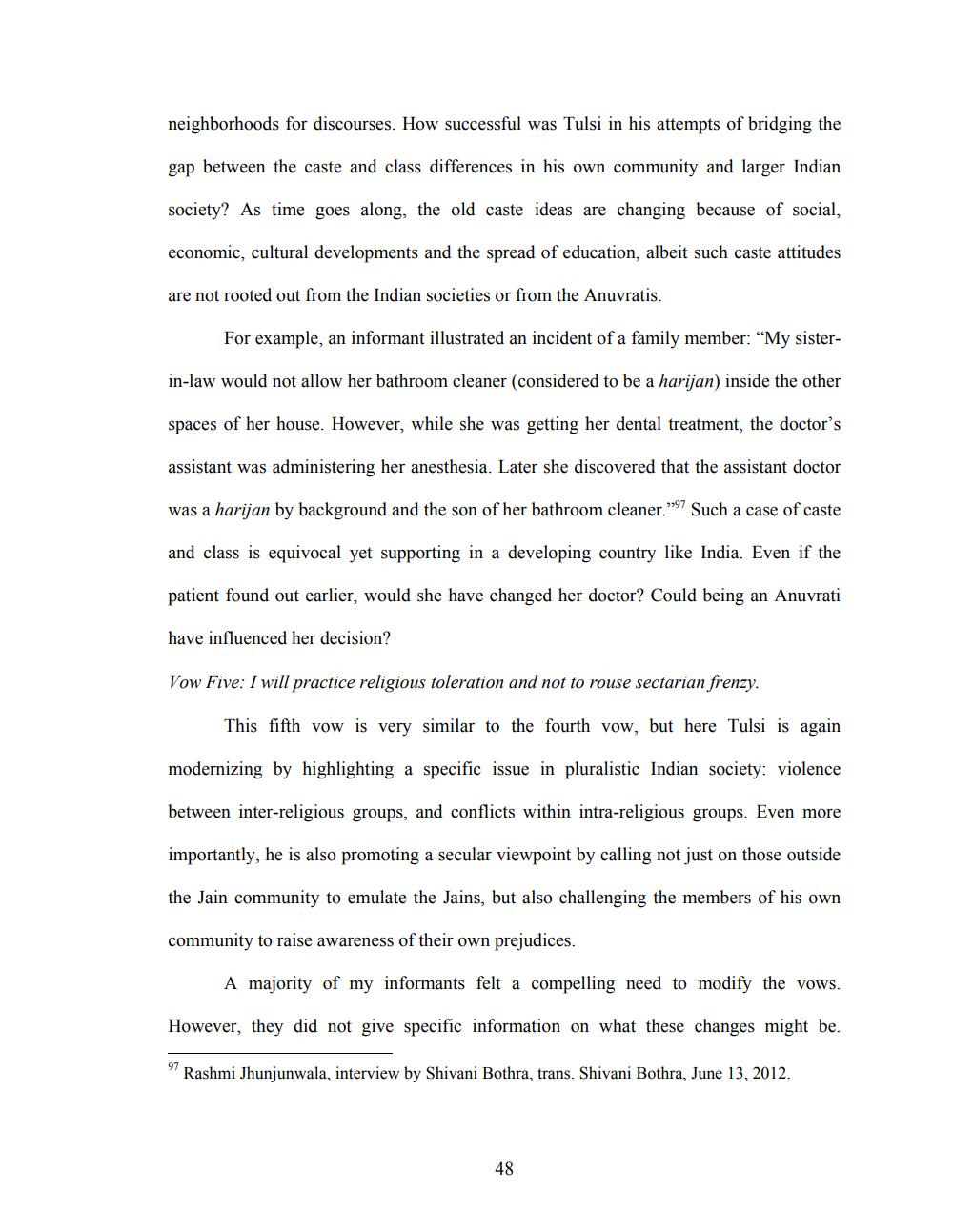________________
neighborhoods for discourses. How successful was Tulsi in his attempts of bridging the
gap between the caste and class differences in his own community and larger Indian
society? As time goes along, the old caste ideas are changing because of social,
economic, cultural developments and the spread of education, albeit such caste attitudes
are not rooted out from the Indian societies or from the Anuvratis.
For example, an informant illustrated an incident of a family member: "My sister
in-law would not allow her bathroom cleaner (considered to be a harijan) inside the other
spaces of her house. However, while she was getting her dental treatment, the doctor's
assistant was administering her anesthesia. Later she discovered that the assistant doctor
was a harijan by background and the son of her bathroom cleaner."97 Such a case of caste
and class is equivocal yet supporting in a developing country like India. Even if the
patient found out earlier, would she have changed her doctor? Could being an Anuvrati
have influenced her decision?
Vow Five: I will practice religious toleration and not to rouse sectarian frenzy.
This fifth vow
is very similar to the fourth vow, but here Tulsi is again
modernizing by highlighting a specific issue in pluralistic Indian society: violence
between inter-religious groups, and conflicts within intra-religious groups. Even more
importantly, he is also promoting a secular viewpoint by calling not just on those outside
the Jain community to emulate the Jains, but also challenging the members of his own
community to raise awareness of their own prejudices.
A majority of my informants felt a compelling need to modify the vows.
However, they did not give specific information on what these changes might be.
Rashmi Jhunjunwala, interview by Shivani Bothra, trans. Shivani Bothra, June 13, 2012.
48




